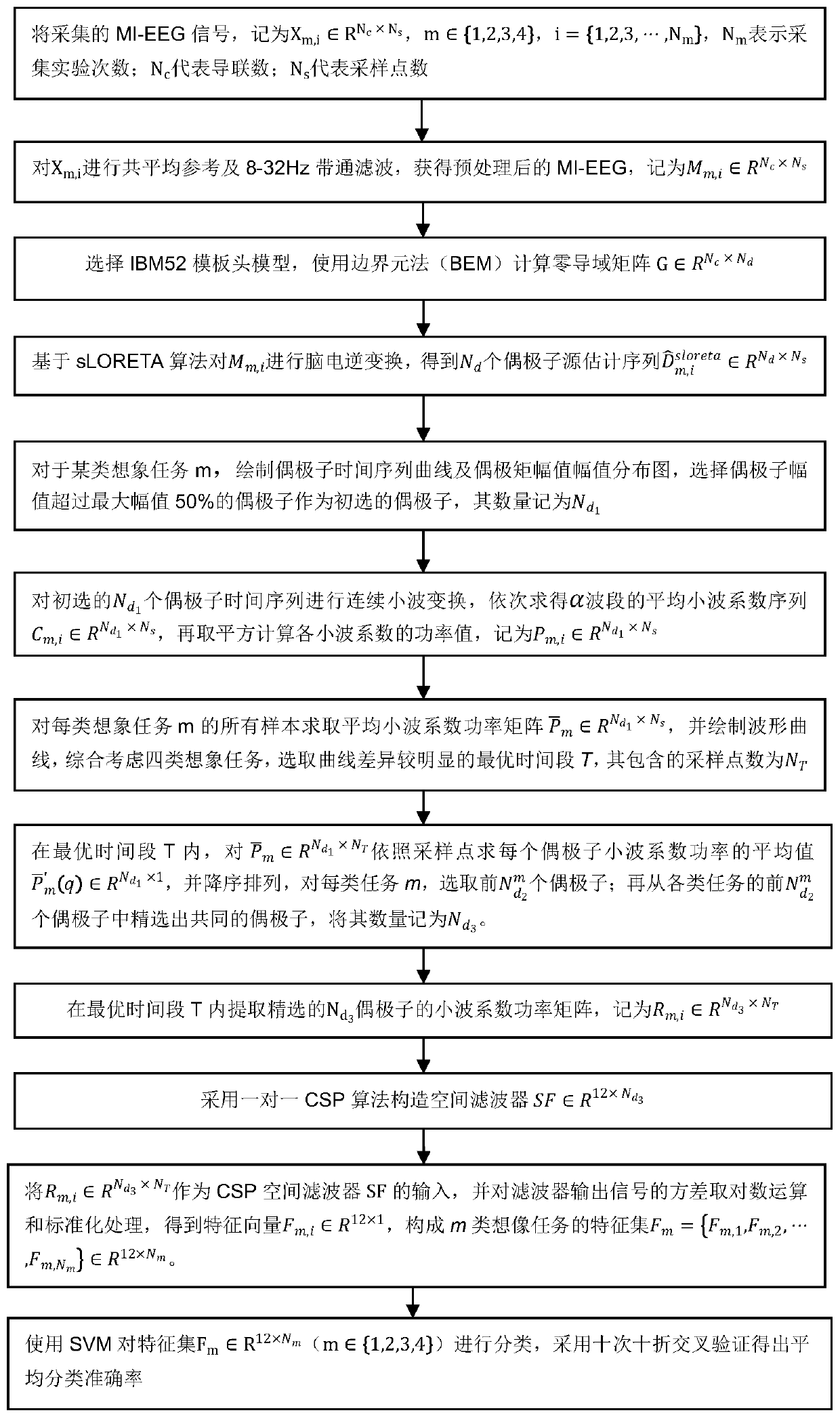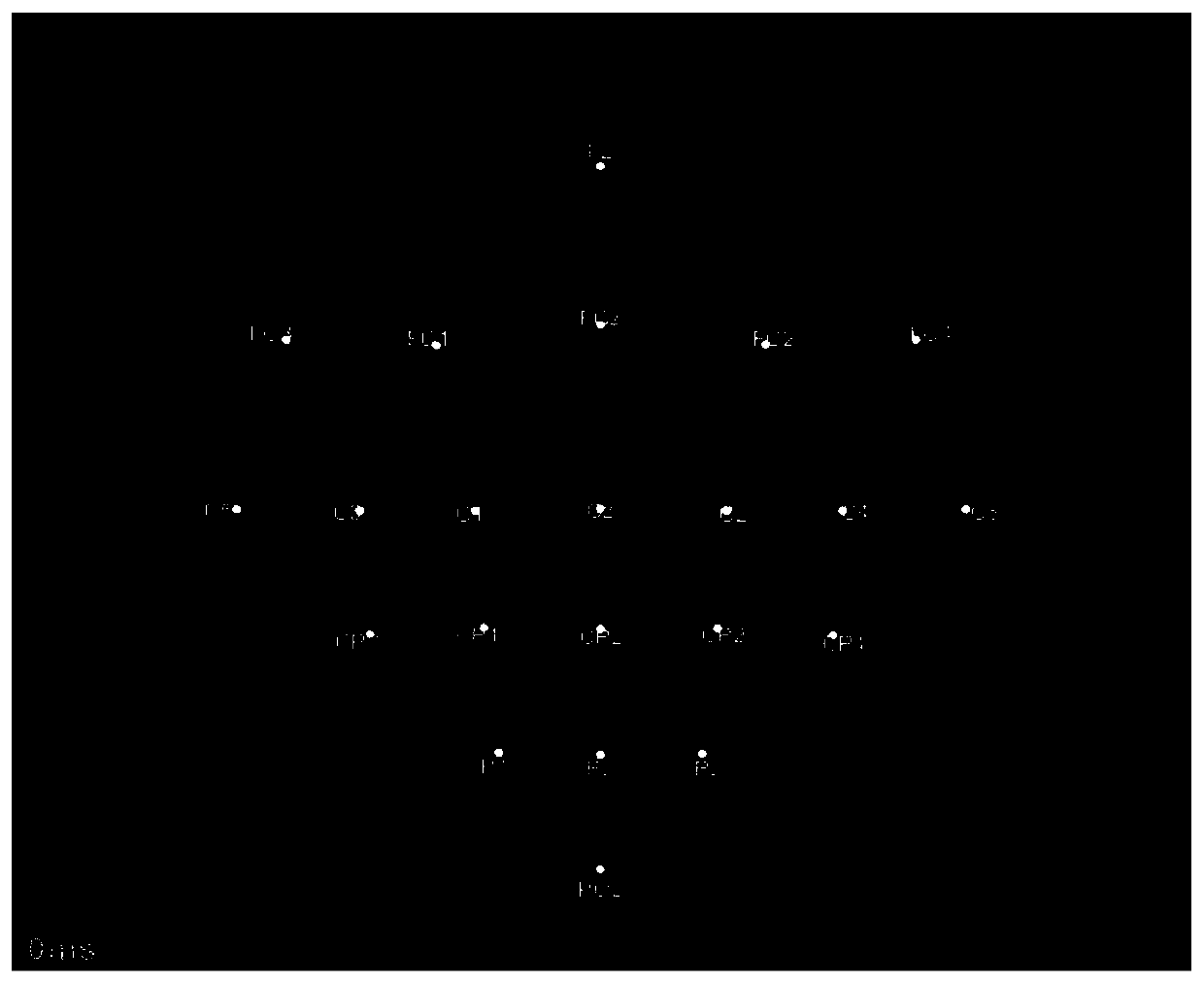Motion image-electroencephalograph (MI-EEG) recognition method based on brain-derived domain space
A technology of MI-EEG and recognition method, which is applied in the field of MI-EEG recognition based on brain source domain space, can solve the problems of affecting accuracy, few rules to follow, and redundant feature information, so as to improve classification accuracy and avoid Redundancy of feature information and the effect of improving computational efficiency
- Summary
- Abstract
- Description
- Claims
- Application Information
AI Technical Summary
Problems solved by technology
Method used
Image
Examples
Embodiment Construction
[0068] The concrete experiment of the present invention is carried out in the Matlab R2017a emulation environment under Windows 8 (64 bits) operating system.
[0069] The MI-EEG data set used in the present invention comes from the Data sets 2a public database of BCI Competition IV, and is collected by developers using 22 leads evenly distributed under the international standard 10-20 lead system, and the sampling frequency is 250Hz. After 0.5-100Hz band-pass filtering. The distribution of electrodes on the scalp layer is as follows: Figure 2.1 shown.
[0070] The timing diagram of the collection test is as follows: Figure 2.2 As shown, each experiment lasted 7.5s. 0-2s is the resting state period, a cross cursor appears on the screen, and a short alarm sound is issued at t=0s; 2s-3.5s is the prompt period of motor imagery task, arrows appear on the screen, pointing to left, right, up and down, Represent the four motor imagery tasks of left hand, right hand, foot and ton...
PUM
 Login to View More
Login to View More Abstract
Description
Claims
Application Information
 Login to View More
Login to View More - R&D
- Intellectual Property
- Life Sciences
- Materials
- Tech Scout
- Unparalleled Data Quality
- Higher Quality Content
- 60% Fewer Hallucinations
Browse by: Latest US Patents, China's latest patents, Technical Efficacy Thesaurus, Application Domain, Technology Topic, Popular Technical Reports.
© 2025 PatSnap. All rights reserved.Legal|Privacy policy|Modern Slavery Act Transparency Statement|Sitemap|About US| Contact US: help@patsnap.com



